"Sometimes I don't want to see the puppeteers,
sometimes I just want to see the magic therein,
and sometimes I just want to pry open the atoms
and know why they spin." -Glen Sutton
But it isn't just the atoms -- the minuscule building blocks of matter -- that spin. It's also the individual galaxies, collections of some mind-boggling number (like 1068) of atoms, that spin.
Messier 95, above, is just one such example. But how did these galaxies get to be this way?
To answer this question, we have to go all the way back to the early stages of the Universe, to when it was almost perfectly smooth.
If we go all the way back to when the Universe was just a few hundred-thousand years old, we see that some regions of space appear slightly colder (bluer) than others, while some are slightly hotter (redder). Why is this?
Because some places in space have slightly more matter than others, while other places have slightly less.
The Universe is actually filled with the same radiation in all of those places, but the places with more matter have a slightly deeper gravitational well for that radiation to climb out of. Compared to the average, that temperature appears slightly colder. Conversely, the places with slightly less matter than average have a shallower well, as so that radiation appears hotter.
The hot spots we don't care so much about, because over time, they're going to be lousy at attracting more matter. But the cold spots are a different story. Being ever-so-slightly denser means they do an ever-so-slightly better job at attracting more and more matter towards themselves than to other regions of the Universe.
The result is that -- over hundreds of millions of years -- these regions gain more and more mass, and eventually grow into galaxies.
And depending on what you pull in, and what your initial conditions are, you will start with some small amount of angular momentum, or overall rotational motion about some axis. And just like a figure skater who starts off spinning slowly who then pulls her arms in, a collection of matter that starts with some small amount of angular momentum will collapse under the influence of gravity.
And when it does, that angular momentum remains. Since your object is now the same mass but much more compact in size, it rotates much more quickly.
Now, as far as we can tell, there shouldn't be any overall angular momentum to the galaxies in the Universe. In other words, if we took a giant survey of spiral galaxies, we would expect to find the same number of galaxies rotating "clockwise" from our point of view as we found rotating "counterclockwise" from our point of view.
Telescopes, at long last, are finally good enough that we can start doing this with some degree of accuracy.
So we do; we look across a huge swath of the sky, at individual galaxies strewn across the Universe and at huge clusters of galaxies clumped together, like the Hercules Galaxy Cluster, below.
And what do the first results of a study like this show? Well, if you listen to the University of Michigan's press office, they'd have you believe that there is a preferred direction of rotation for galaxies in the Universe. In fact, they say that the direction our galaxy rotates is 7% more common than the other way around, and that
the chance that the excess could be a cosmic accident is something like one in a million.
Are you skeptical? You should be. Because I went to the paper (access restricted). First off, they use only a sample of galaxies (about 15,000) in the nearby Universe, and it isn't clear whether this is a fair sample or not, or whether it's biased in some way. Second off, the odds that this measurement would occur at random -- in other words, if there were really no preferred direction -- isn't one in a million, it's 0.08%, or about your odds of rolling a Yahtzee on the first throw. And finally, the statistical significance of this result is not even at four-sigma.
In other words, this would be such a revolutionary discovery -- overturning our long-held idea that the Universe is the same, on average, in all directions -- that it really would require some extraordinary evidence. What's been seen so far is suggestive and interesting, in other words, it looks like further studies should definitely be done, but it would take a much more compelling study to convince me that galaxies prefer to spin one direction over the other in the Universe.
So that's why galaxies spin, and why we really expect them to spin with no preferred orientation in the sky! But I'll definitely be keeping my eye on this one.
P.S.: For those of you who've been hankering for a technical review of modern cosmology, you may want to check out this new paper (access not restricted), as it's an excellent summary for the budding specialist. Enjoy!

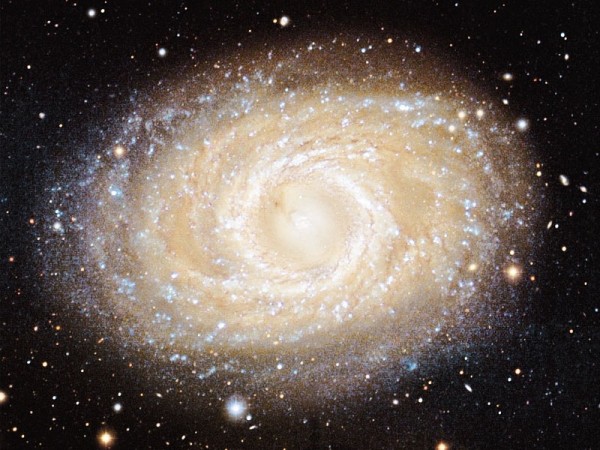
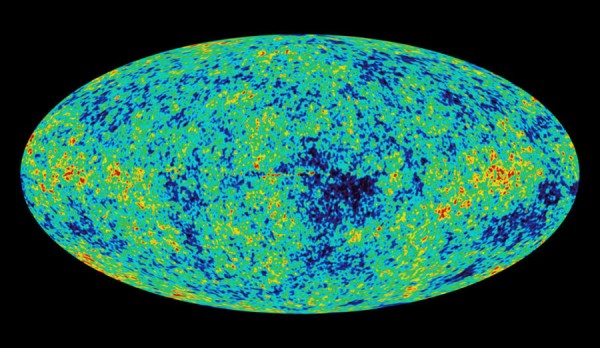
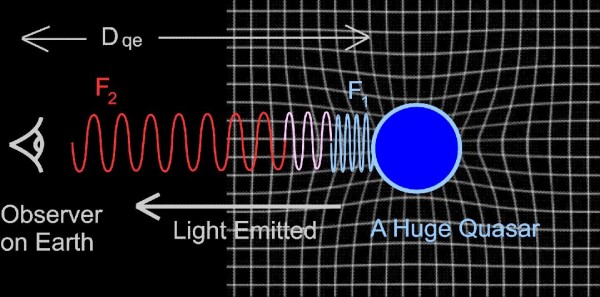
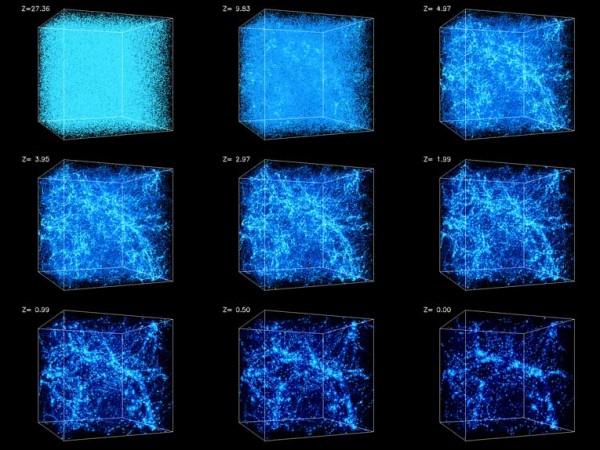

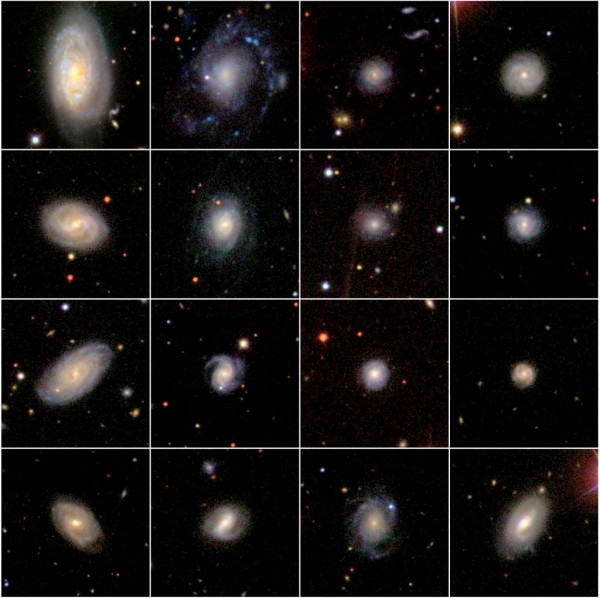
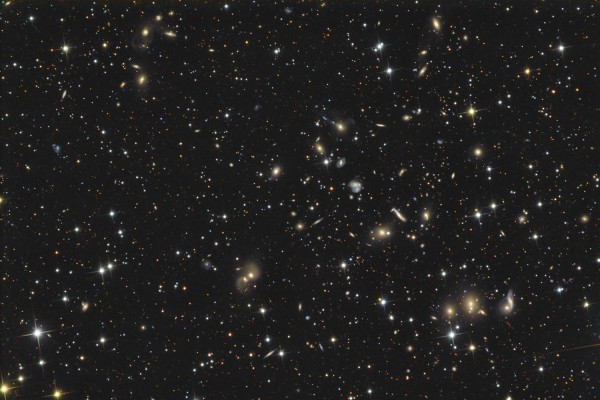
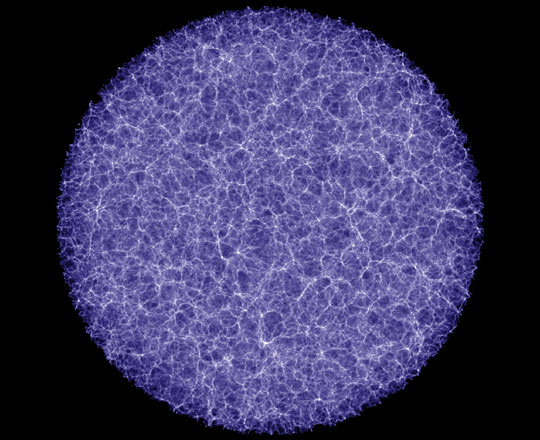
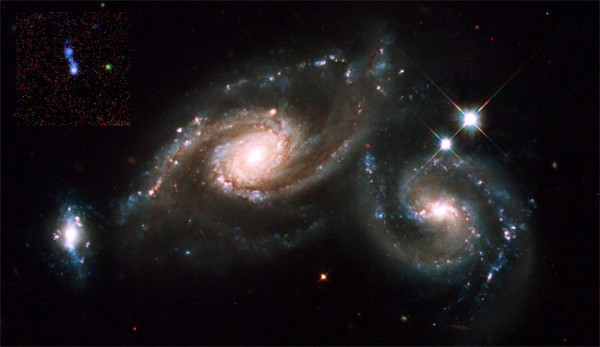
The hard question, of course, is whether the universe spins.
Of course if you see an apparent clockwise galaxy from the opposite side you would describe it as rotating counter-clockwise. In other words, this study (which I can't access) says as much about orientation as it does chirality.
Here's an interesting question - look at earth-scale natural sorting systems (i.e - the process whereby fine sand collects in a riverbed to make clay, or desert winds erosion favoring one side of distributed boulders); is there any reason why galaxies would be oriented in certain directions? Where are these differing orientations located and how do they relate to the flows of matter along great walls and superclusters?
Well, we wouldn't expect them to spin with any particular direction, but it's not like some conservation law is violated if it's 51/49.
Great brief, btw. Thanks for the link!
I love your articles, you make every topic so easy to understand. This one is a gem! Thank you.
I don't see how there can be initial conditions on a galactic scale that would have some non-zero angular momentum. The universe having zero angular momentum I take to mean that the summed angular momentum around any arbitrary point is zero i.e. the motion of any atom around that point is balanced by one or more atoms elsewhere canceling out its contribution. Applying this to the catchment area of a proto-galaxy, for every atom that starts rotating one way around the galactic center, there will be another that goes in the opposite direction. Clearly, this is not what happens, so what is there special about the early universe that generates this condition? Is it somehow related to the non-uniform distribution of matter you refer to?
I thought this was the subject of the original Galaxy Zoo study?
If I'm recalling correctly, they also initially found a preferred direction - until they tested their results by mixing in mirror images of the SDSS samples, and found it was a result of human bias in deciding the direction of rotation (in itself an interesting result, of course).
So one would want to know about the new study's methodology for deciding which way a galaxy rotates, too.
Oh, and would it be this:
http://arxiv.org/abs/1104.2815 ?
...and, having skimmed the paper, I see Longo acknowledges the Galaxy Zoo studies and discusses the differences with his.
Here endeth the spam.
I want to propose a drinking game for this blog:
Take a drink every time Ethan posts the picture from WMAP
Take a drink every time Ethan posts a Hubble Deep Field image
Others?
I think either of those drinking games would cause coma and/or death. But I have to admit I look forward to those Hubble deep field images. That big shiny tube is the embodiment of humanity's best aspects.
I didn't think the UofM paper was restricted... If it's the one I'm thinking about, I was able to download it from the arxiv a couple weeks ago.
I'll have to go back and review it more thoroughly now ... I didn't think they got the statistics wrong! ... It an absolutely incredible (i.e. - Nobel-level) claim! -- that isotropy could be violated!! (Even tho they only considered data out to z~0.04.) Almost everything in cosmology depends on it!
"And just like a figure skater who starts off spinning ... will collapse under the influence of gravity."
Gee - where do you go to watch figure skating? ;-)
Galatasarayâde hedef Buffon Galatasaray, Juventusâun deneyimli eldiveni Buffonâu kadrosuna katmak istiyor BaÅkan Aysalâın âSürpriz ve ünlü bir kaleciyle anlaÅacaÄızâ diyerek iÅaret ettiÄi isim, Juventusâun âSüpermenâ lakaplı file bekçisi Buffon. Ä°talyan kalecinin alternatifi ise Reina
Nice to have all those pretty pictures explaining why galaxies spin. Where are all those pretty pictures that explain why galaxies spin too fast. There is mounting body of evidence indicating that the "putative dark matter particle" does not exist. So when I see a picture of a rotating galaxy, I do not worry as to why is rotates but more as why there are so few paid illustrious scientists out there who will admit that they do not have a clue as to why a galaxy rotates too fast. Why can't these highly paid scientists follow the precedent set by Copernicus and question the very foundation about there beliefs about gravity are based. If they do this they will recognize this notion that mass can attract mass or warp space is speculative, mysterious and non intuitive. That is just what is just what the 1500 year old notion that the heavens rotated around the earth every 24 hours was: speculative, mysterious and non intuitive.
Isn't this the paper you are referring to?
http://arxiv.org/abs/1104.2815
Thanks, very good article, bottom up with a high rise!
I didn't know about the problematic uncertainty (that pesky asscess issue), but my tale from meager data was:
1) Small effect.
2) Effect difficult to measure.
3) Effect tapering off with distance, as would be expected from 2.
4) The old N/S observatory issue (and galactic plane correlation) as with the fine-structure constant variation; expect precisely this as systematic effect.
@ AJKamper:
I am entertaining the notion that Ethan would gladly put up the corresponding picture of another observable universe if he had access. Unfortunately the Universe Paywall has a steep rate!
@ Peter Fred:
I am not sure why you would want to publish the claim that there "is mounting body of evidence indicating that the [DM] does not exist" on a science blog, when the evident fact that is that the converse is happening in science papers.
DM is a part of standard cosmology, so scientists have moved on to ask what is is instead of if it is.
I haven't read all of the links yet; but I will.
Ethan says, "they'd have you believe that there is a preferred direction of rotation for galaxies in the Universe... Are you skeptical? You should be... it would take a much more compelling study to convince me that galaxies prefer to spin one direction over the other in the Universe."
Then Ethan says, "First off, they use only a sample of galaxies (about 15,000) in the nearby Universe, and it isn't clear whether this is a fair sample or not, or whether it's biased in some way." I assume this "First off" is Ethan's strong point. But this comment isn't scientific criticism; it is political disparagement! Take the time to wait for an independent expert assessment and know that the sample is deemed by such and such expert to be FAIR or BIASED and know how many galaxies need to be studied for a FAIR sample.
But if the universe is spinning in one direction then galaxies on average would share that spin preference.
Gravitation and Inertia (1995 Princeton Series) by Ignazio Ciufolini and John Archibald Wheeler gives an excellent summaries of rotation in astronomy including various rotating "standard Friedmann cosmological model" universes.
pg 254 "We can put some experimental limits on the rotation of the universe... for a perturbed model universe of Bianchi IX type... Collins and Hawking... placed limits to the present rotation of the universe between less than 3 x 106-11 and less than 2 x 10^-14 arcsec/century...However, according to other unpublished calculations, more realistic limits for the Bianchi IX models are of the order of 10^-4 arcsec/century."
pg 252, "the local compass of inertia (gyroscopes) is at rest relative to the average energy in the universe." i.e. relative to the average rotation in the universe as in frame-dragging.
pg 185, "The universe on a scale of less than a few tens of megaparsecs (1 Mpc = 3.26 x 10^6 lt-yr) is observed to be inhomogeneous. We see stars, galaxies, groups of clusters of galaxies, superclusters, etc. We then observe large structures made of voids, holes, clouds, filaments, walls and knots, etc... Nevertheless, on a larger scale of the order of a few hundred millions of light years, the universe appears to be essentially uniform and homogeneous... This very large scale spatial homogeniety of the universe is one of the observational bases for the mathematical development of the standard Friedmann cosmological models."
Rotation, like homogeneity and topology, of the universe is something that has experimental estimates and those measures will improve.
My point is that excessive skepticism is not BOLD enough. Fermilab's recent Symmetry Breaking research would never have been done without an open mind in the face of extreme skepticism, the recent Gravity Probe B research also describes experimentation that was viewed with extreme skepticism.
As far as I know, everything in the universe rotates including the universe within the observational limits of course. e.g. "As every massive object rotates, it is plausible that most, if not all, black holes also rotate. This makes Schwarzchild black holes very unlikely to exist." Wiki
I assumed that the point of the survey was to check whether the Universe does in fact appear to be isotropic as we usually model it.
Hurricanes spin because of the rotation of the earth. Maybe galaxies spin because of the movement of the universe?